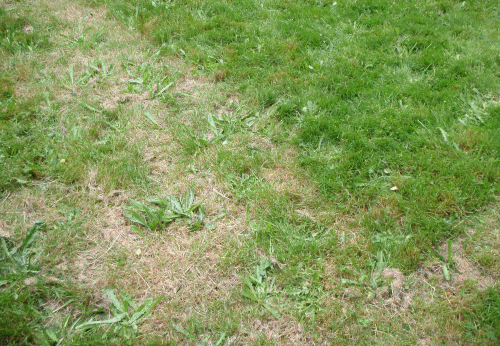Crabgrass is definitely one of my biggest obstacles. It seems to show up everywhere, and will quickly make a thick mat that chokes out other plants. It also has a tendency to sneak past me by popping up at the base of the established plants. It wouldn't bother me, except for the fact that it's so thirsty, and quickly drains the area it's growing in. Being a short-lived annual, it seems to not care about dying from thirst after sucking the water from the soil, since it can just go to seed and have thousands of babies come up the next time it rains. Fortunately, it does pull up easily; however it often comes up attached to a big clod of soil (especially when it's in my container plants), which means I have to shake it out before tossing it (since it will start growing again).
Unfortunately, there's no clear solution that I've discovered (yet). I've found some things that can tolerate it, mostly perennials (shrubs), biennials (chard/kale) and some deep-rooted annuals (sunflowers); though they typically need to be established before the crabgrass takes over. Mint and it's relatives seems to be able to hold it's own against the crabgrass, but doesn't seem to be able to crowd it out. Bermuda can crowd it out but, in my opinion, that's worse than the crabgrass. Poultry seem to eat it, particularly my geese, but they'll also eat the other things growing. So far, the best tool I've found to clear a patch fairly quickly is the scuffle hoe. I use it to clear the crabgrass from a spot, then try to immediately plant or seed something in that place before the leftover roots push new growth or the crabgrass seeds in the soil bank decide to come up. It isn't foolproof but it's a good way to begin the transition to growing something that can compete with the crabgrass.







